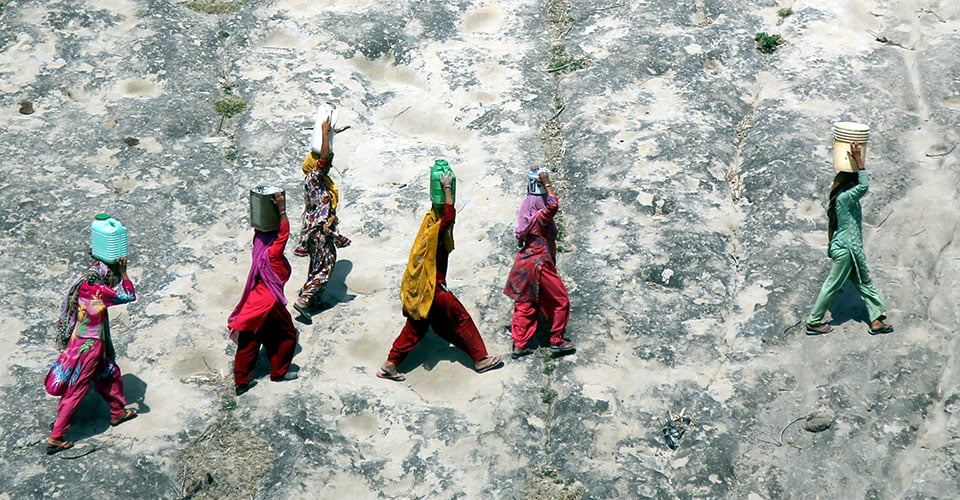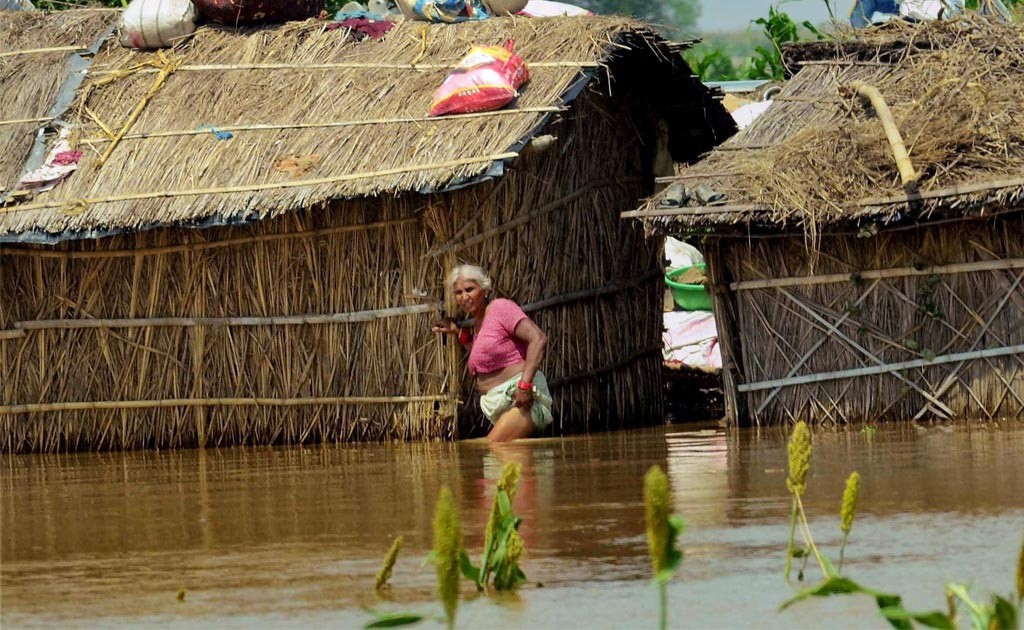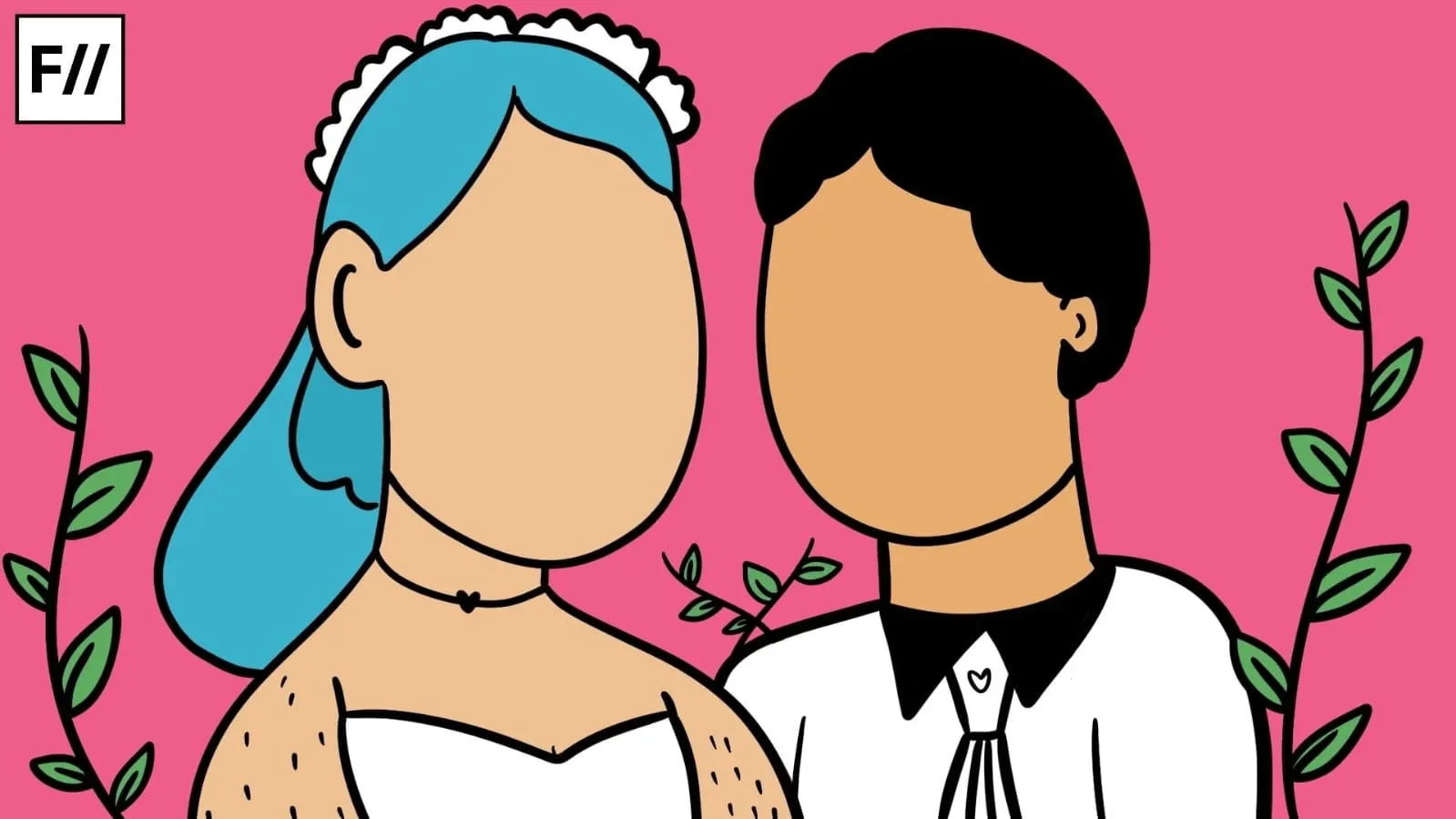In the past year alone, reports of extreme weather events have dominated the Indian news. From the Chennai Water Crisis to the ongoing Bihar Floods, India has seen a rise in extreme weather events in the past few years. A 2018 report by India Meteorological Department too, indicated the increase in disaster potential for instant flooding over central India, where, according to the report, the intensity and frequency of ‘heavy and very heavy rainfall’ have been increasing. But why are such incidents of extreme weather events on a rise? What’s the reason behind the heavy rains that have destructed Kerala and Bihar alike? The answer is simple: climate change.
A report by the Intergovernmental Panel for Climate Change (IPCC) underlined the relation between climate change and extreme weather events, “A changing climate leads to changes in the frequency, intensity, spatial extent, duration and timing of extreme weather and climate events, and can result in unprecedented extreme weather and climate events.”
India’s varied geographical makeup and diverse demographics make it even more vulnerable to extreme weather events. As is evident by the rise of such events in the past few years. Events such as droughts, floods and heat-waves are only going to be more frequent. A seven-part series called India’s Climate Change Hotspots by IndiaSpend has already shown how climate change has affected communities in India. The recent Bihar floods are just another addition to the long list of extreme weather events that have taken place in the country- a list which will continue to grow longer, if recent trends are to be believed.
it is often women who are responsible for gathering and producing food, fetching water and ensuring there is enough fuel for heating and cooking. Extreme weather events such as droughts and floods make these tasks difficult.
But what is central to both climate change and the extreme weather conditions that it brings about—is that they are not neutral—and certainly not gender-neutral. Climate change doesn’t affect men, women and children in the same way. According to the UN, climate change affects women more severely than men. As much as 80% of people who are displaced by climate change are women. But what might be the reason for that? As per the International Union for Conservation for Nature (IUCN) 2015 Issue Brief, it is often women who are responsible for gathering and producing food, fetching water and ensuring there is enough fuel for heating and cooking. Extreme weather events such as droughts and floods make these tasks difficult. It is then the most vulnerable who are affected the most. Since 70% of the world’s poor are women—they are the ones who are hit the worst.

Neeta Lal, a Delhi-based journalist, in her story “Indian Women Worst Hit by Water Crisis” for the Inter Press Service, explains, “As primary stakeholders in water resource management, Indian women have always borne the brunt of such shortages. Travelling long distances to fetch the precious commodity, balancing heavy pitchers on their head while juggling households, children and cattle, working on farms as well as giving care to the elderly, they have had to do this drudgery for decades.”
Existing gender roles, cultural norms and gender inequality make the situation even worse. Focusing especially on India, a report suggests that women make up over 65% of the agricultural workforce. In case of extreme weather events, say, the Bihar floods, women then are of course most vulnerable. The women who are especially connected to agriculture and fishery might be particularly vulnerable.
Also read: Is The Water Crisis In India The Beginning Of Climate Breakdown?
High rates of illiteracy in women makes it harder for them to be even aware of the looming danger, and they are definitely not aware of the risk of extreme weather events in their lives. In their article called “Women May Be More Vulnerable To Climate Change But Data Absent”, authors Namratha Rao and Anita Raj underline this by giving an example, “Natural disasters as a consequence of climate change also create greater risk for women. In the 2004 Tsunami in Thailand, more women than men died because they had stayed back to look for children and relatives as per their gender roles, and because they did not know how to swim and climb trees like the men and boys did.“
And while women have to take on the brunt of the consequences of climate change, not all women are affected the same. Again, factors like class, race, and in India- caste too, influence how women are impacted by climate change.
And while women have to take on the brunt of the consequences of climate change, not all women are affected the same. Again, factors like class, race, and in India- caste too, influence how women are impacted by climate change. Water tankers that were supposed to better UP’s water woes were only being sent to upper-caste neighbourhoods, as reported by India Today in July this year. Tankers weren’t reaching villages where Dalit people lived, and Dalits weren’t even allowed to touch the hand pumps that were in upper-caste villages.
Adivasi women have it worse. Adivasi people usually keep animist beliefs and practice animist customs and traditions, which also impacts how they are affected by climate change. UN Development Fund for Women’s report titled ‘Adivasi Women: Engaging with Climate Change‘ explains, “Indigenous peoples are arguably among the most vulnerable populations for a complexity of reasons. Most notable is their substantial dependence on natural resources, making them vulnerable to changes in the quality and quantity of natural resources. The indigenous peoples of Asia face additional challenges as they are often discriminated against and live in excluded communities in Asia.”
So what might be the solution? In a world full of climate change deniers inspite of increasing incidents of extreme weather events, how does one ensure that the fight against climate change becomes intersectional?
Also read: “How Dare You?” The Greta Thunberg Effect And The Fight Against Climate Change
Well, the first step would be to acknowledge the fact that climate change is not gender-neutral. Then comes the part where policy, programmes, projects that are designed to fight climate change must also keep this in mind. It also should be intersectional—recognising that marginalised communities—and especially marginalised women will have to be central to the discussion. Only then one can minimise the risk that women face in case of droughts, floods, heat-waves and other extreme weather events that are ultimately the consequence of climate change.
Featured Image Source: NDTV
About the author(s)
Purnima is a wannabe writer and a want-to-be cat mom.




